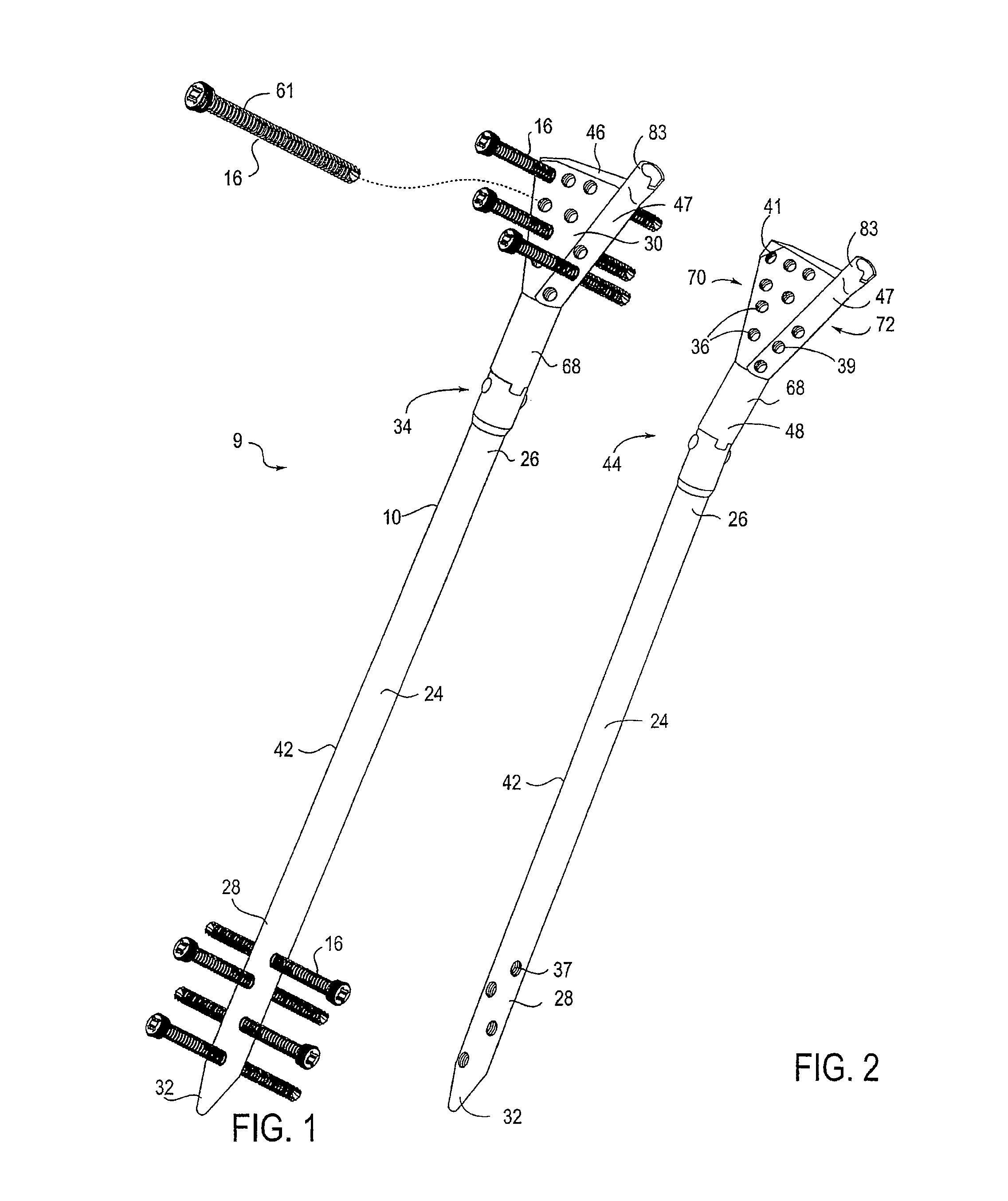Percutaneous intramedullary bone repair device
a percutaneous and intramedullary bone technology, applied in the field of percutaneous intramedullary bone repair devices, can solve the problems of plate fatigue, plate failure, and plate attachment to the side of the bone, and achieve the effects of reducing the number of patients and reducing the number of surgeries
- Summary
- Abstract
- Description
- Claims
- Application Information
AI Technical Summary
Benefits of technology
Problems solved by technology
Method used
Image
Examples
Embodiment Construction
[0038]The figures and description herein describe an intramedullary bone repair system and device. More specifically, a percutaneous intramedullary bone repair system 9 is provided. In this system, the bone repair device 10 is inserted within the interior 12 of the bone 14 and secured in position using one or more fastening devices, such as screws 16. The intramedullary bone repair device 10 is adapted for placement or insertion into a bone 14. The bone 14 has a first end 18 and a second end 20, and a longitudinal axis 22 extending therebetween. The device 10 preferably extends along a longitudinal axis 22 of the bone 14 and is for use with a plurality of screws 16. The device 10 includes an elongate body, shaft or nail 24 having a proximal end 26 and a distal end 28. A head or plate 30 is seated in, and preferably pivotally coupled to the proximal end of the shaft 24. The distal end of the shaft 24 has a tapered end 32 for facilitating insertion of the shaft 24 along the longitudin...
PUM
 Login to View More
Login to View More Abstract
Description
Claims
Application Information
 Login to View More
Login to View More - R&D
- Intellectual Property
- Life Sciences
- Materials
- Tech Scout
- Unparalleled Data Quality
- Higher Quality Content
- 60% Fewer Hallucinations
Browse by: Latest US Patents, China's latest patents, Technical Efficacy Thesaurus, Application Domain, Technology Topic, Popular Technical Reports.
© 2025 PatSnap. All rights reserved.Legal|Privacy policy|Modern Slavery Act Transparency Statement|Sitemap|About US| Contact US: help@patsnap.com



